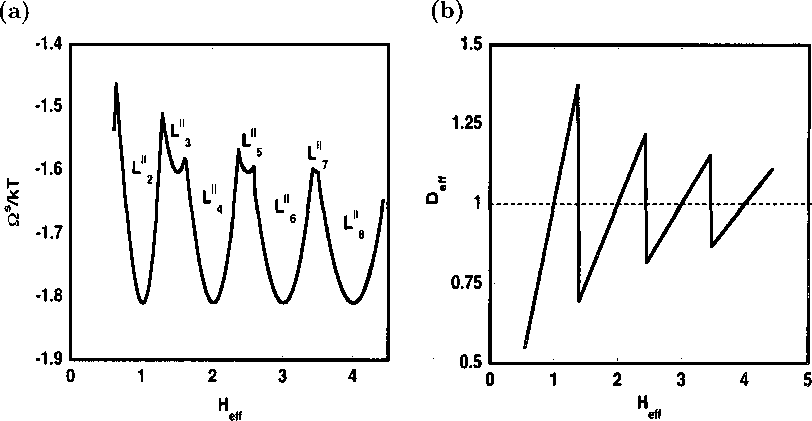copolymer film is defined as
_ ∏eff
eff- M
(5.18)
where Λ∕^ is the number of lamella. Hence, only the symmetric lamellar phases with
energetically favorable A block at both the surfaces are stable at higher film thickness.

Figure 5.8: (a) Excess surface free energy of the copolymer as a function of the effective
film thickness, (b) Reduced lamellar period (for symmetric phases) of the copolymer as a
function of the effective film thickness. For the diblock copolymer, N = 8 and e∕kT — 0.289.
For surfaces, ew∕kT = 0.1.
In other words, the balance between having the lamellar period close to the (pre-
ferred) bulk equilibrium period and unfavorable interactions of the B block of the
copolymer at one of the surfaces, determines the stability of the anti-symmetric lamel-
lar phases. To test this, the preference of the both the surfaces towards the A block
is increased by increasing ew∕kT to 0.3. Figure 5.9 shows the symmetric lamellar
135
More intriguing information
1. The magnitude and Cyclical Behavior of Financial Market Frictions2. Der Einfluß der Direktdemokratie auf die Sozialpolitik
3. Analyzing the Agricultural Trade Impacts of the Canada-Chile Free Trade Agreement
4. Financial Markets and International Risk Sharing
5. Dynamic Explanations of Industry Structure and Performance
6. Testing Panel Data Regression Models with Spatial Error Correlation
7. The technological mediation of mathematics and its learning
8. The name is absent
9. Why unwinding preferences is not the same as liberalisation: the case of sugar
10. The name is absent